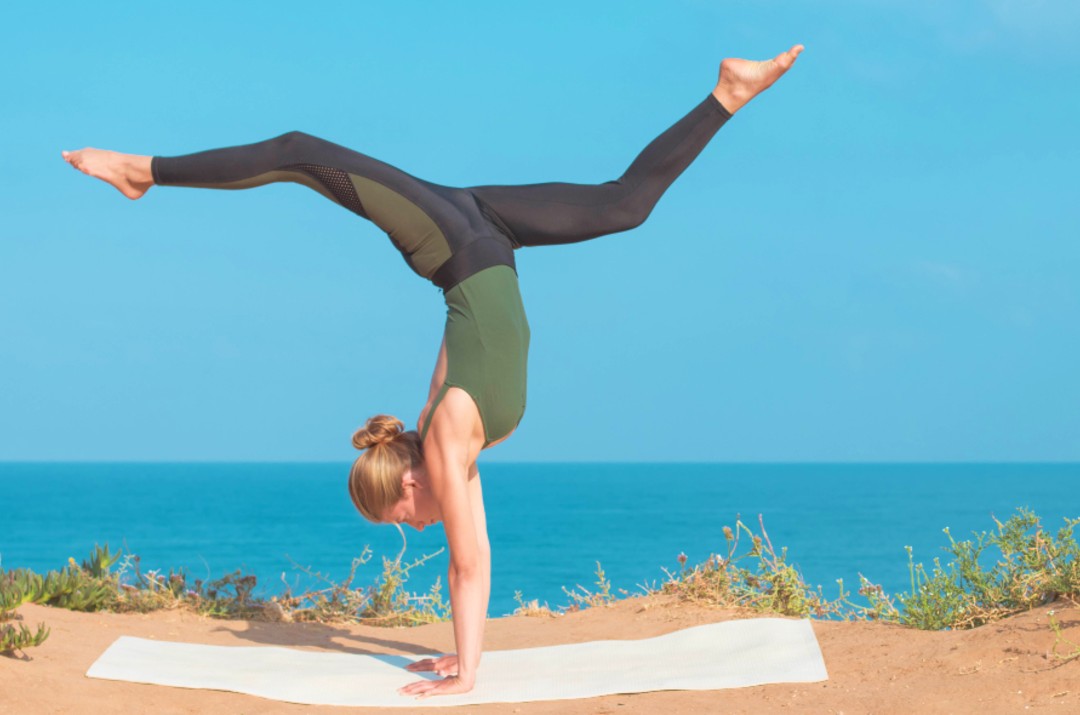However, like all bodily activities, it can be accompanied by risk if not performed correctly. Let’s take a look at six poses that can cause injury, why they may occur, and how to avoid them so your patients can enjoy the incredible benefits of yoga. We’ll conclude with an easy beginner yoga video specifically for office workers and some tips in case of injury.
6 Yoga Poses That Can Cause Injury
1. Downward Facing Dog (Adho Mukha Svanasana)
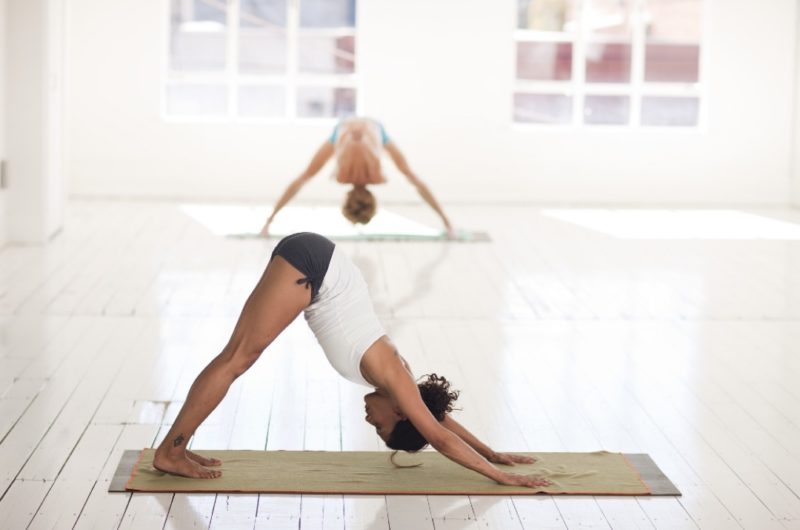
Downward facing dog is an iconic yogic pose. With feet and hands on the ground, the body initially forms a plank which is then raised. The knees become positioned below the hips, the hands below the shoulders, and the bottom is raised until a triangle posture is achieved. While this may look simple, downward facing dog can strain joints if performed incorrectly or too enthusiastically (not uncommon in excited beginners)!
Lower back pain
Experts, like Chiropractor Dr. Michael Remy, note that downward facing dog is one of the most common yoga poses that can cause injury. The substantial stretching of the lower back’s soft tissues and bending of the lumbosacral spine may lead to strain.
Joint strain
Additionally, rounding over of the back or forcing less than pliable heels to the ground adds stress to the lower limbs. Ill placed arms can overtax shoulder, elbow and wrist joints. This can lead to muscle strain, tear and joint damage.
Ways to improve downward facing dog
- Maintain a neutral spine; avoid over or under arching
- Lift the heels from the mat and try a soft bend at the knees
- Spread the fingers and toes comfortably to ensure a secure foundation
- Establish strong arms by drawing the upper limb bones into their sockets and bringing the shoulder blades down the back
2. Full Wheel (Chakrasana)
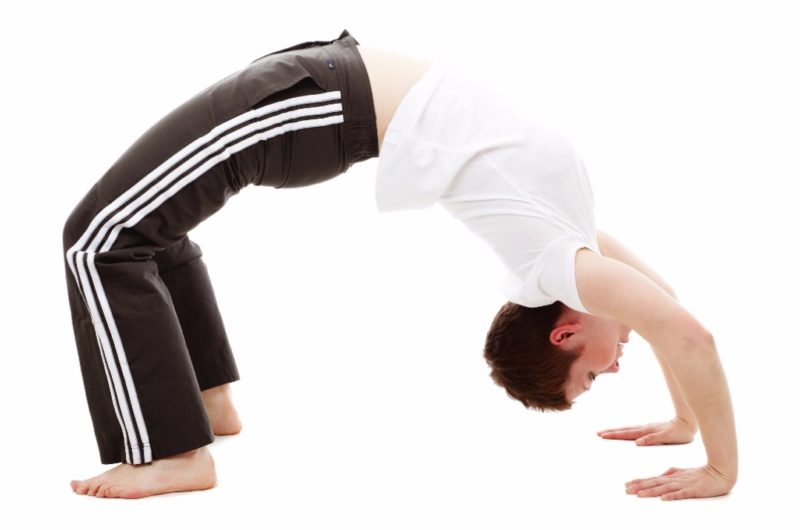
Ok, so there’s no getting around this: Chakrasana is a serious pose! Any posture that asks you to mimic an inside out wheel — and then hold it — is only for yoga practitioners that mean business. It takes practice and progression and, even then, can risk injury.
Neck problems
When rising from the floor into this pose, the pressure is placed on the neck. This can lead to exacerbation of preexisting cervical problems or trigger a new condition.
Lower back
Full wheel pose bends the spine backwards, stretching the vertebral column farther than occurs in the normal course of our often sedentary days. If not properly warmed up, if moving faster than can be carefully controlled, or where sufficient core strength isn’t yet present, injuries can occur. Simply put, the hyperextension of the spine that is involved in this pose can be harmful.
Warning: In those with osteopenia (low bone density) and osteoporosis (where the bones become brittle and prone to fracture), there is a higher chance of fracture. These two medical issues should raise a red flag: strong extension exercises and postures like full wheel pose ought to be avoided.
Wrists
Hyperextension of the wrists, when the backsides of the hands are pushed towards the back sides of the forearms, can tear or strain muscles and ligaments. Warming up correctly and working slowly towards this pose over multiple practice sessions will lower your risk of injury.
Interested in boosting your practice?
Register for a CBDCLINIC™ account today.
3. Camel Pose (Ustrasana)
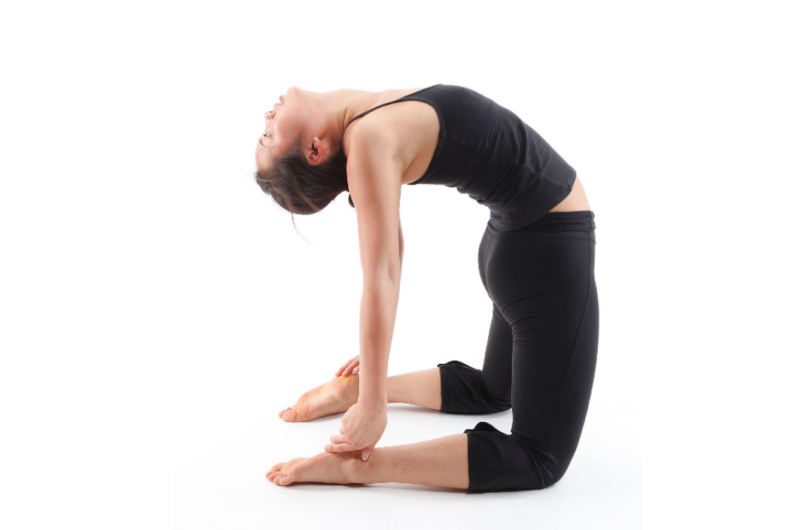
Ustrasana is another posture that places the spine into hyperextension. Placing the body’s weight through the shins and feet, the spine is bent backward so the stomach is stretched, the head brought back over the feet and the hands reach behind to connect with the soles.
Lower back
As with all hyperextension postures, the strain on the spine can be significant. This has the potential to cause facet joint strain, bruised nerves, stretched joints, and disc injury. To lessen the risk, build-up to this posture over time so you have both the strength and the muscular coordination to achieve it safely. Warm-up well. Listen to your body. Follow the advice of a trained instructor.
Knees
While a yoga mat is a wonderful aid, they aren’t designed to offer extended comfort. When your clients are supporting themselves through knees on the ground in camel pose, the force through their two lower limbs needs to be considered. For those with pre-existing problems like osteoarthritis, this pose may place too much strain through the knees, causing aggravation of pain and dysfunction.
As with other postures, tell clients to take the time to find a comfortable position and move into this pose slowly and with control.
4. Four-Limbed Staff Pose (Chaturanga Dandasana)

Chaturanga Dandasana is one of the sequential poses used within the adored Sun Salutation sequence. The spine is pressed to rest on extended wrists and toes, with the ‘staff’ formed by a straight, planking body.
Sounds easy enough?
For those with already present conditions like carpal tunnel syndrome or repetitive strain injuries, this posture can pose some problems. Additionally, the tummy can dip down, adding pressure through the spine.
It requires strong arms, back and legs, plus control and coordination. Fatigue can lead to muscle strains so advise your clients to start slowly and avoid progressing faster than they are biologically able.
5. Warrior Pose (Virabhadrasana)
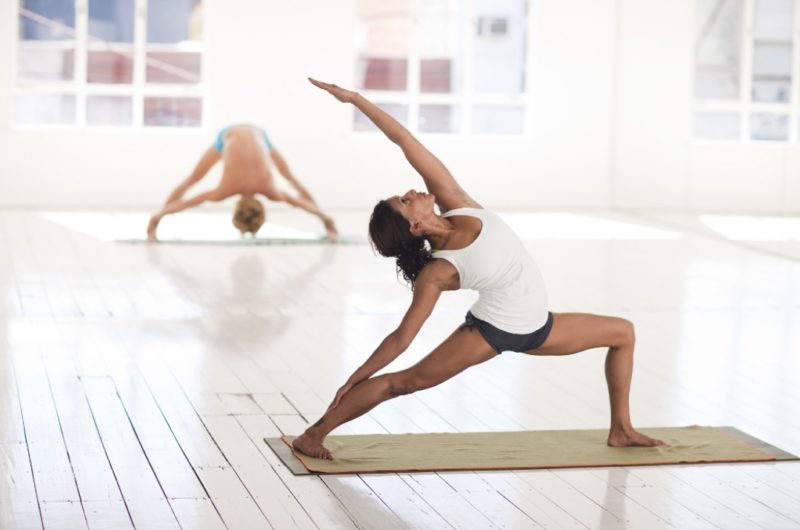
Ready to discover how to protect your clients’ knees for another iconic yoga pose? Virabhadrasana centers on a lunge posture. While the arms move depending on the version of warrior pose, the knees are our concern.
Knees
As with any lunge, allowing the foot to pass over the knee increases the risk of knee injury. A full-flex adds pressure to the knee’s meniscus and may increase the pain from a current tear or lead to injury. If your client enjoys the Warrior pose, tell him or her to ensure that his or her knee remains over but not past the foot. Also, advise hi or her try a higher position with a gentle knee angle. There is no need to over flex.
6. Forward Bends (Uttanasana or Paschimottanasana)
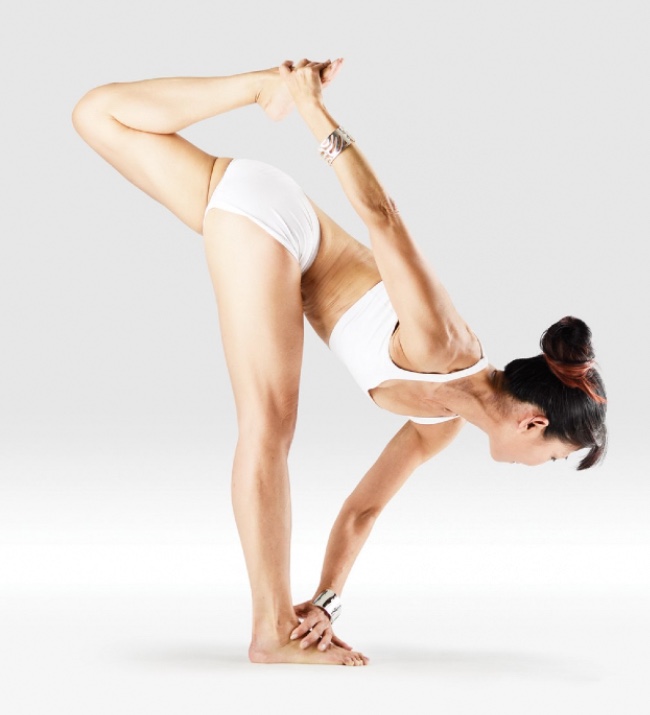
Yoga comes with a range of forward bends, meaning it is entirely possible to find the right versions for yourself and your body’s ability.
Standing forward bend (Uttanasana) traditionally requires straight legs and knees, with the hips bent forward allowing the torso to rest down onto the thighs. For those with tight hamstrings, forcing this posture might result in an unhelpful snap. Pulled muscles can occur from pushing oneself too hard.
Seated forward bend (Paschimottanasana), as the name suggests, allows your clients to take this posture to the floor. With legs out in front, knees straight, and lower limbs strengthened along the ground, the upper body is moved towards the toes while maintaining a neutral spine. As with Uttanasana, moving too far, too quickly or past the body’s capacity can result in muscle fibers that simply cannot cope with the overextension.
Avoid overextension by:
- Slowing down
- Stretching within your limits
Gradually, your clients will be able to safely progress.
Some further advice for the safe practice of Yoga…
These three simple tips will help you to avoid unwanted injury and enjoy the many benefits this ancient practice has to share…
- Advise your clients to start with beginner moves and build up as they are able to progress with caution.
- Advise your clients to listen to their bodies (always)!
- Advise clients to move into and out of poses with slow, controlled and fluid transitions.
15 (ish) Minutes of Yoga Office Break
And if injury strikes…
Sometimes, even with our best intentions, injury can occur. These three approaches will help your clients recover faster.
1. Iyengar yoga
Ironically, yoga can help with yoga-related injuries. The study, Effectiveness of Iyengar yoga in treating spinal (back and neck) pain: A systematic review, found that:
Overall six studies with 570 patients showed that Iyengar yoga is an effective means for both back and neck pain in comparison to control groups.
As you see above, there are many yoga videos online specifically for pain. Here’s one of our favorite yoga for back pain videos.
2. RICE method
Rest, ice, compression, and elevation (RICE) is the well-accepted method for treating an acute injury.
3. Naturally-derived pain relief creams, ointments, and oils
Menthol and camphor are superstars of the naturally-sourced pain relief world. Research published in the International Journal of Sports Physical Therapy has proven that topical menthol-based analgesic decreased perceived discomfort. Similarly, camphor has been proven effective in offering cooling and heating relief. They can be easily implemented into a cream, ointment, or oil; which makes them a popular ingredient in over the counter remedies. But many over the counter products combine them with harsh chemicals.
But CBD CLINIC™️ offers another solution that will make natural-oriented practitioners and clients feel more comfortable using the products long-term. Our creams, ointments, sticks, and oils combine the active ingredients, menthol and camphor, with essential oils that provide skin nourishing benefits and calming scents like peppermint, eucalyptus, and clove oil. All of this is combined with natural emollients including skin conditioning CBD hemp oil or extract, jojoba seed oil, beeswax, and other nourishing ingredients.
You can advise your clients to use the products before or after their practice to ease any minor muscle or joint pain they may be experiencing.
Natural Practice, Naturally-derived Relief
With the right approaches and gentle progression, the regular practice of yoga can boost your clients’ physical, mental, emotional and spiritual wellbeing. When they stay safely within their capabilities, they’ll be able to enjoy the incredible benefits of yoga without the risk of injury. But if minor injury strikes, CBD CLINIC™ products are here to help reduce the pain.
Interested in boosting your practice?
Register for a CBDCLINIC™ account today.
Disclaimer: This information is for educational purposes only. It has not been approved by the FDA to diagnose, treat, prevent, cure, or mitigate any diseases or conditions. We use CBD in our products for cosmetic purposes only.

